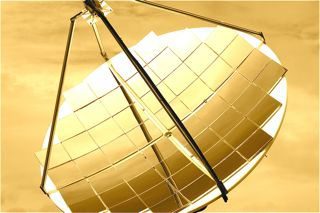The International Energy Agency has delivered a bullish outlook for renewable technologies, saying its deployment would accelerate even beyond the rapid growth of recent years, despite the winding back of incentives and subsidies in some countries.
IEA executive director Maria van der Hoeven said more than 710GW of renewable energy capacity is expected to be installed in the next five years, a 45 per cent jump over the previous five years. But it was still well short of what was needed to meet emission abatement and climate change targets.
Her predictions were made in its Medium-Term Renewable Energy Market Report, the first the conservative IEA organization has completed for non-fossil energy sources. As van der Hoeven said during a media event with international journalists last night, that in itself is a reflection of the deep changes in the global energy market.
“It show how far we have come in four decades since 1974,” van der Hoeven said. Initially the IEA was focused only on monitoring oil supply disruption risk, and predicting the state of fossil fuel markets in the short, medium and long term.
Now, she said, the IEA recognises that the addiction to fossil fuels has pushed the world “to the brink”, the result of a “collective policy failure” to bring greenhouse gases under control. “Renewables have come of age,” she said.
The latest report comes to some interesting conclusions about the deployment of renewables. The first is that in Europe, despite the deep economic crisis and negative growth, renewables continued to grow and no country had wound back their renewables targets, even if they had lowered subsidies as costs came down and budgets came under pressure. In some countries such as Italy, the targets had increased even as the subsidies were wound back, reflecting the rapid cost declines.
But while Europe continued to be a key centre for renewable deployment, most (60 per cent) will occur in non-OECD countries, with China emerging as the powerhouse, accounting for 40 per cent of renewable deployment over the next 5 years. The other key markets are the US, India, Germany, Brazil, Italy and Japan.
“Renewable energy is one of the only real success stories at the moment,” van der Hoeven said. Solar PV panels in households and business had average 42 per cent annual growth over last decade, wind had averaged 27 per cent per annum growth. “Renewables offer more than just a positive for the environment,” she said. It offered also a diversity of energy supplies and enhances energy security.”
Didier Houssin, IEA’s head of energy markets, made some interesting points from the 200-page report:
Deployment of renewables is not slowing down despite the lack of economic growth, it is accelerating and will spread out geographically. This in turn was creating a “virtuous circle of increased competition and cost reduction.”
China is the leader in renewable deployment, and despite starting at high base, remains a leader even in growth terms, despite the lack of market signals in that country.
The amount of renewable deployment in non-OECD countries (not including China), will exceed that of north America by 2017.
The IEA also recognized that renewables were causing wholesale prices to fall markedly in some markets. In Germany, because of high gas prices, this was having an impact on gas fired plants, the numbers of hours they produce and their profits. Markets needed reform to address these issues.
In the US, because of tighter EPA standards and the low cost of gas, coal was being displaced in large quantities.
Solar was also offering the most cost effective options for off grid areas in non-OECD countries,” Houssin added. “The good news is that solar PV is competitive in many markets around the world,” he said. It was also cheaper than oil-fired generation, and oil-fired generation currently accounted for 1,000 terrawatt hours around the world – around 20 times more than solar PV.
That was a big opportunity for solar. “It can be an option for mining in Chile and South Africa,” he said. And non OECD countries had the opportunity to avoid the mistakes of OECD countries which had locked in fossil-fuel dominated grids.
Solar PV, thanks to its rapid cost reductions, is having great appeal. “We can see that. Everyone can put solar panels on his or her own roof,” van der Hoeven said.
And here are a couple of graphics that would help illustrate some of the points made by the IEA. The first is the number of countries were sizeable deployments of individual renewable technologies were being made. By 2017, there were expected to be 55 countries with more than 100MW of solar capacity (up from 5 in 2005), and more than 70 with 100MW of wind energy.
This graph below illustrates how each region will play to their strengths. Note the large share of solar in OECD Asia-Oceania (essentially Japan and Australia), massive wind in US, and hydro in non-OECD countries.
This shows how much the current deployment of renewables is dominated by hydro. But taking a line from 2012 to 2017, the share of hydro falls significantly, with non-hydro growing at an annual rate of 14.3%, compared to hydro’s 3.1%.
This graph below highlights the prospects in Japan, the world’s third largest economy, which is going to have one of the more interesting transformations as it focuses on solar, as well as wind and geothermal, to substitute for the nuclear energy that no longer has the confidence of the community. Japan is introducing the world’s largest feed in tariffs (52c/kWh) to kick-start the solar deployment, which it aims at 28GW by 2020 (It has around 4.6GW now).
And this highlights the countries – and regions – with the biggest deployment of solar PV anticipated in the coming years, along with the compound average growth rates (CAGR).













